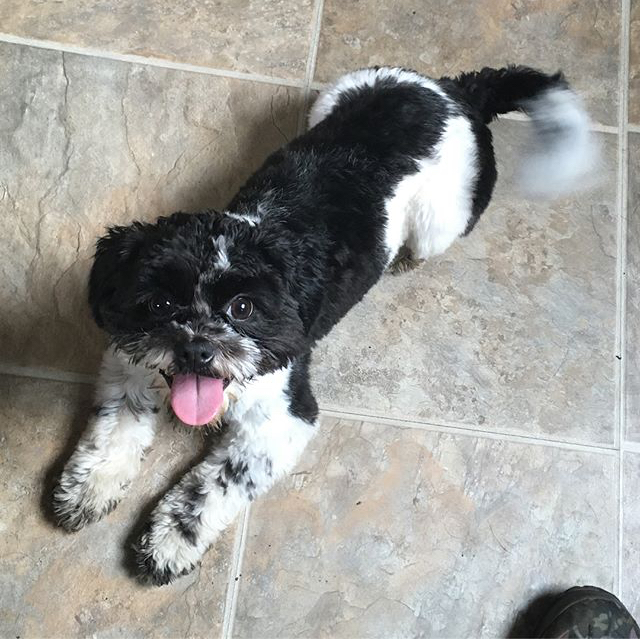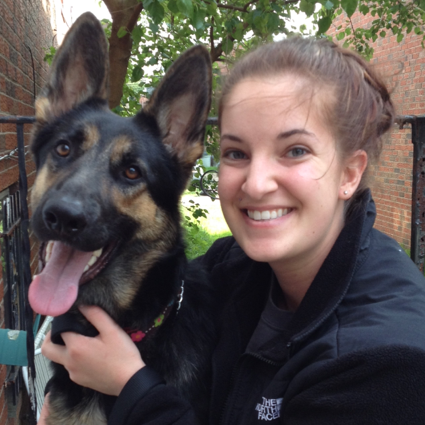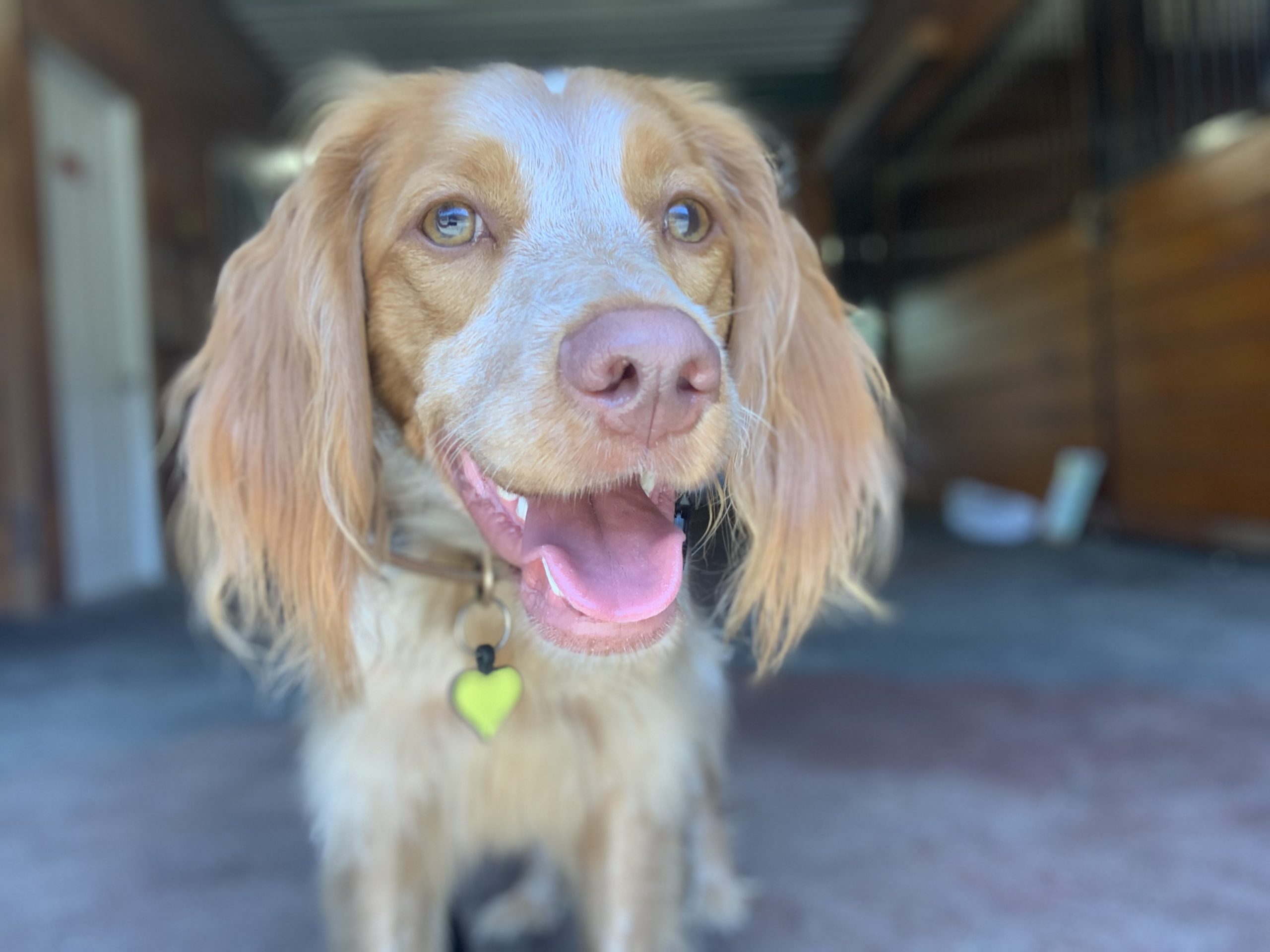As we know, a well-balanced dog is one who has adequate physical exercise, and the dog park is a great place to get your pooch’s energy drained! In fact, energy management is one of the first things a trainer looks at when a dog is experiencing behavioral issues. Not only does Fido get to socialize with other dog friends, but he gets to sprint at full speed in a safe space, which is hard to find if you don’t have a fenced-in backyard, especially in the city. But what happens if your dog can’t go to dog parks?
Despite the perks of dog parks, the space is not always appropriate for every dog owner! There are various reasons in which you may not be able to go to the dog park such as your dog has an injury limiting physical activity, you rescued a new dog and are unsure of their dog friendliness, or your dog is shy or overstimulated in dog parks. Some dogs simply can’t handle the intense high energy this environment can bring, AND THAT IS OKAY! Actually, it is normal for dogs to become less social around age 2.
Dog parks are typically self-monitored by the owners and dog body language can be hard to understand! Not everyone realizes when Fido is getting annoyed or what behaviors to interrupt. Your pup may do well with a couple of dog friends, but dog parks can get crowded. Finally, some dogs may resource guard over balls or sticks while in the park. Whatever the reason may be, sometimes dog parks aren’t right for your dog, so what can you do to drain that energy?

1. Small play dates with stable dogs.
For the dog who is overstimulated or shy around dogs, small play dates with stable dogs may be right for you. If you have friends or neighbors with dogs, setting up a time for your dogs to hang out while controlling the environment and giving breaks when needed can be a great way for your dog to play but not get overwhelmed. If Fido is friendly with other dogs, but not suitable for dog parks, a dog daycare is a great option for you as the staff is trained to read dog body language and intervene at inappropriate behavior.
2. Group dog training classes.
Classes are a great way to work your dog’s brain and impulse control while being surrounded by other dogs. Attending training sessions are not about dog socialization so your dog doesn’t have to come in contact with any of the other students! From obedience to agility or tricks, classes are perfect for dogs learning new commands while focusing on you in a distracting environment.
3. Long leash recalls.
Long leash recalls are a great way to get your dog running while also practicing their “come” command. Once your dog has a general knowledge of “come”, grab a 30-foot leash, a high-value reward (meat), and head to a park! Continually allow your dog to get distracted at the end of the line and when they’re busy sniffing, call them over to you. Make sure to reward them well to encourage them to keep coming back. If your pup has trouble leaving a distraction, run backward to get them to chase you; it makes it super fun for them!

4. Structured walks.
Structured walks incorporate both physical and mental work for your pup. Bring treats on your walk, determine which side you would like your dog to walk on, and keep a short leash. Reward your dog for walking nicely by your side, and use “look” and “leave it” to keep your dog from getting too distracted. I like to release my dog to “go sniff” every couple of blocks to go potty or learn about the world through their nose. When I’m ready, we are back to loose leash walking by my side. This uses impulse control while the dog gets their necessary walks in.
5. Food puzzles for meal times.
Food puzzles also get Fido thinking and tap into his natural love to work for food. Kong Wobbler, Petsafe Meal Dispensing Ball, and puzzle boards are my favorite way to feed breakfast and dinner kibble. It’s the only thing my dog eats out of! It can take your dog 30-40 minutes to eat their meals, keeping them entertained while you are busy while getting that energy out! My other favorite way to get pups working are Kongs. The Classic, Stuff-a-Ball, and Goodie Bone are just some of the options you can use to stuff with treats or food for your dog. I typically like to fill these things with yogurt, pumpkin, leftover meat, or peanut butter and then freeze them. Once frozen, Fido will be working on this delicious activity for up to an hour!

6. Stay in high distraction environments with distance and duration.
One of the most important commands your dog can use while out and about is stay. Both sit and down stay are used as impulse control and to keep your dog calm in certain situations. With spring right around the corner, stay practice is perfect for preparing your pup to accompany you at dog-friendly restaurants. Practice a down stay working on duration, distance from your dog, and distraction during the stay. I like to practice in parks and dog-friendly stores such as Petsmart or Lowe’s before starting stays in a restaurant. Make sure to bring treats and reward your dog during their stay to keep them motivated, and by the end, they will be exhausted!
7. Chew distractions such as bully sticks and dog chews.
Chewing is a natural part of a dog’s history and another great way to drain some energy while keeping them entertained. Bully sticks, Himalayan dog chews, and braided chews are much more appropriate than your couch cushion or chair leg! For your heavy chewers, antlers, water buffalo horns, and knuckle bones from the butcher are some long lasting options.

8. Hide and seek with a tugger as a reward.
Hide and seek is a fun way to play with your dog and keep their brain working! For playing hide and seek, put your dog in a stay in one room, go into another one and hide, then release them to come find you. Start easily by hiding behind a door or bed, then make it harder. You can make the reward of finding you super fun by keeping a tugger with you and playing tug once they find you.
9. Scent games that use food under cups or tucked around a room.
“Find it” is a scent game to play using food, and there are many ways to play. One, you can place treats in a cup or under a bowl while the others are empty. Your dog has to use their nose to sniff out which one has the food hidden in it. In another version of “find it”, you can place treats around the room, in more secretive places as you progress, and then allow your dog to search them out.

10. Fetch with balls, water bottles, pens, or keys.
“Fetch” can be a great way to get your dog running after a ball. Add teaching a hand delivery with the ball to make fetch easier for you and get your dog thinking as well. Mark with a “yes” when your hand touches the ball in their mouth, then give a treat. If your dog has trouble dropping the ball, you will need to use higher value treats such as meat. Eventually, move your hand further away from the ball, jogging backward, “yes” and treating when the ball makes contact with your hand. Finally, fade out running backward! You can even teach fetch with objects that aren’t the dog’s toys like water bottles, pens, or your keys. To do this, you will have to mark your dog with a “yes” when they put their mouth on the object. Then, move on to marking when your dog holds the object in their mouth, just for a second at first then gradually longer. After your dog is picking the object up, you can add hand delivery!
Although we believe dogs should be able to go play at a dog park, the truth is some just cannot attend them. Here are so many ways to get not only the physical energy out, but the mental energy as well. It is very important to have a balanced energy management plan for your dog so behavioral issues do not arise and they remain healthy. All of the training also helps strengthen the bond between owner and dog!



Big thanks for this article! One of OP trainers was working with a new puppy owner at Orianna Hill’s dog run just yesterday, and I wish more people would do that — it is such a help for new owners especially to get some expert feedback on interpreting their own dog’s signals (and others!) We often have to emphasize to people that “not every dog is a dog park dog” and it’s no reflection on either dog or owner. On a snowy day like today, I also appreciate the suggestions for blowing out some of my own puppy’s energy.
Thanks so much. I really want to move to Philadelphia, but my dog is not good for dog parks. she resource guards me. She actually is ok in doggie day care, but she’s 11 years old and not all doggie day cares are careful with the needs of a senior dog. I now live in another state with a fenced yard. But my dog loves cities and I sure would love a Center City condo. I wish I could rent someone’s yard to let her off leash sometimes.
Comments are closed.